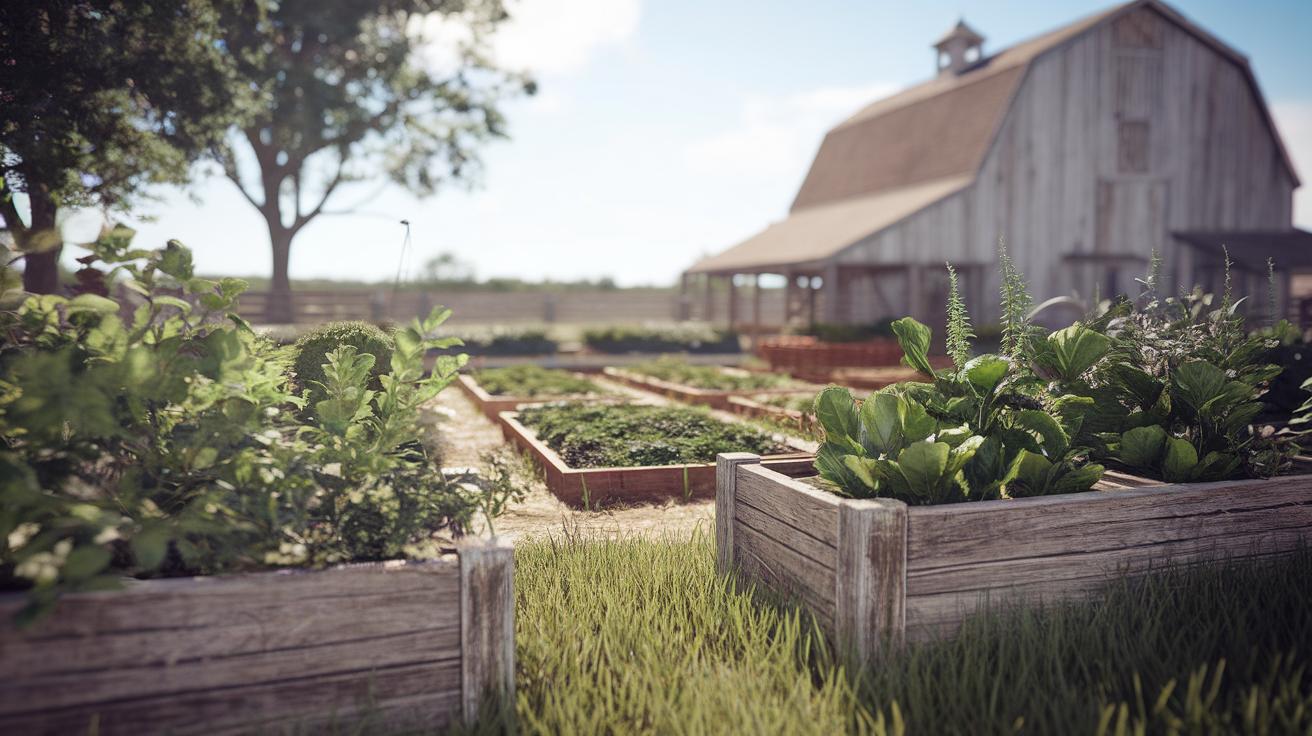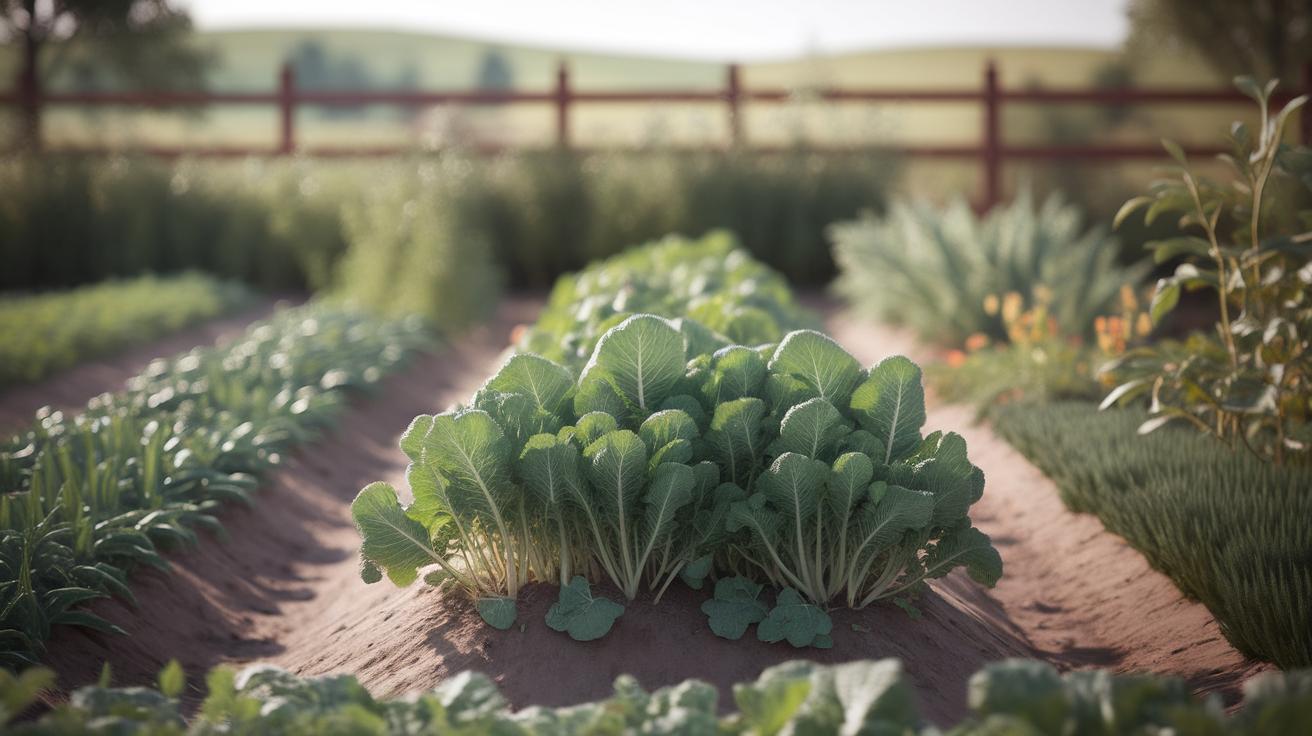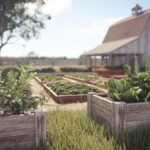Introduction
Farm gardens epitomize the rustic charm that many seek in modern gardening. These carefully curated landscapes not only provide a source of fresh produce but also embody a connection to nature that can be deeply fulfilling. The diversity found in farm gardens—be it in vegetable patches, flower beds, or herb spirals—reflects a harmonious relationship between beauty and practicality. This exploration leads us to discover how these gardens can be designed with intention, utilizing basic principles that foster both aesthetic appeal and utility.
In this blog post, we discuss about the various elements that contribute to successful farm gardens, from soil health to plant selection. By understanding the essential aspects of garden design, readers will be equipped to create spaces that resonate with their personal style while catering to the environment. With a focus on sustainable practices and biodiversity, we will uncover the myriad ways to cultivate a thriving garden that embodies both rustic charm and modern sensibilities.
Understanding the Basics of Farm Garden Design
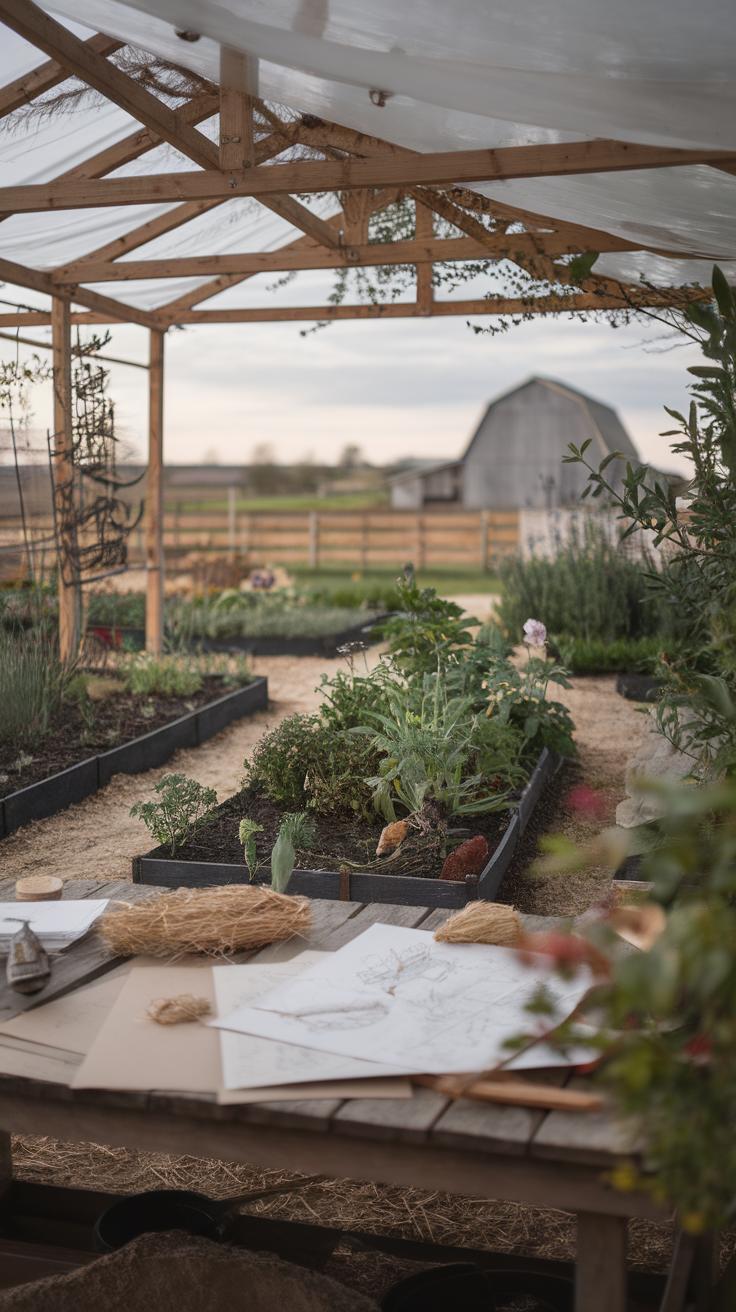
Foundational Concepts in Farm Garden Design
Creating a successful farm garden begins with a solid understanding of design principles. A farm garden should blend aesthetic appeal with practicality, ensuring that each element works in harmony with the others. Start by assessing the location and its natural features, which can dictate sunlight exposure, wind patterns, and soil quality. Selecting suitable plants that thrive in the given environment is essential for achieving healthy growth.
Incorporating pathways and raised beds can streamline maintenance and enhance accessibility, allowing gardeners to engage more effectively with their plants. Consideration of plant heights and colors can further enrich the visual landscape, creating a tapestry of texture and tone. Each choice should reflect an intention to connect with nature while maximizing the functional use of space, embodying the rustic charm inherent in farm gardening.
Principles of Effective Design
Effective farm garden design encompasses a few key principles. One foundational concept is the importance of microclimates; by grouping plants with similar environmental needs, gardeners can optimize individual plant health. Companion planting not only promotes biodiversity but also aids in pest management, contributing to the garden’s overall resilience.
Embracing natural soil amendments, such as compost or organic mulches, fosters a vibrant ecosystem that supports plant health. These basic design strategies create a sustainable framework, ensuring that the farm garden flourishes season after season while retaining the authentic charm that draws many to this rewarding practice.
Crafting a Functional Layout Designing Your Farm Garden for Efficiency and Charm
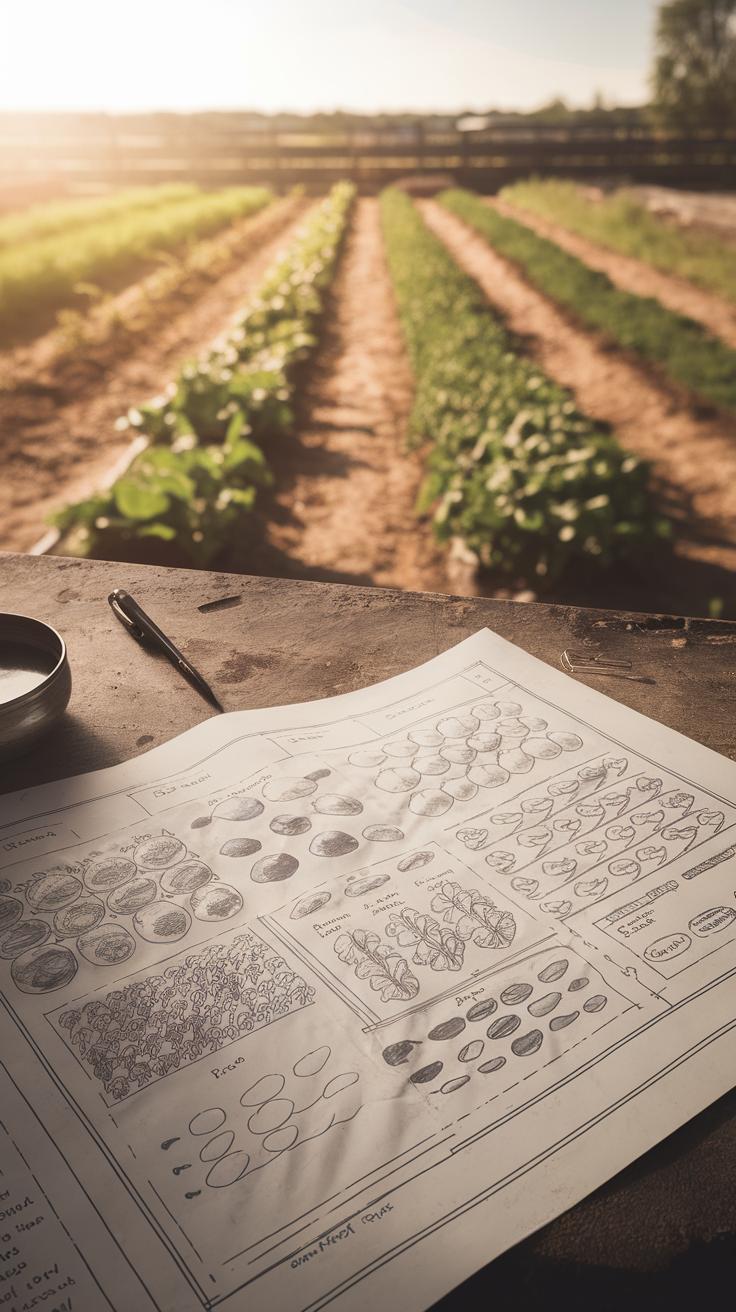
Maximizing Utility and Aesthetic Appeal
Creating a farm garden layout begins with a careful assessment of your space and the goals you want to achieve. Start by zoning the area into distinct sections: workspaces, growing plots, and relaxation areas. This not only enhances functionality but also fosters a visually appealing environment. Consider implementing raised beds or terracing, which not only conserves space but also improves drainage and access. Incorporating paths made of gravel or mulch can facilitate easy movement throughout the garden while adding rustic charm.
Maintenance Made Easy
Investing time in designing a layout promotes easier maintenance over time. Grouping plants with similar water and light requirements makes irrigation simpler and reduces workload. Adding organic mulch around plants can help suppress weeds and retain moisture, creating a more sustainable environment. Seasonal plant rotation can be incorporated into the layout to maintain soil health and reduce pest issues. Overall, thoughtful planning transforms the farm garden into a delightful ecosystem that reflects nature’s beauty while remaining functional and manageable.
Emphasizing Biodiversity in Farm Gardens
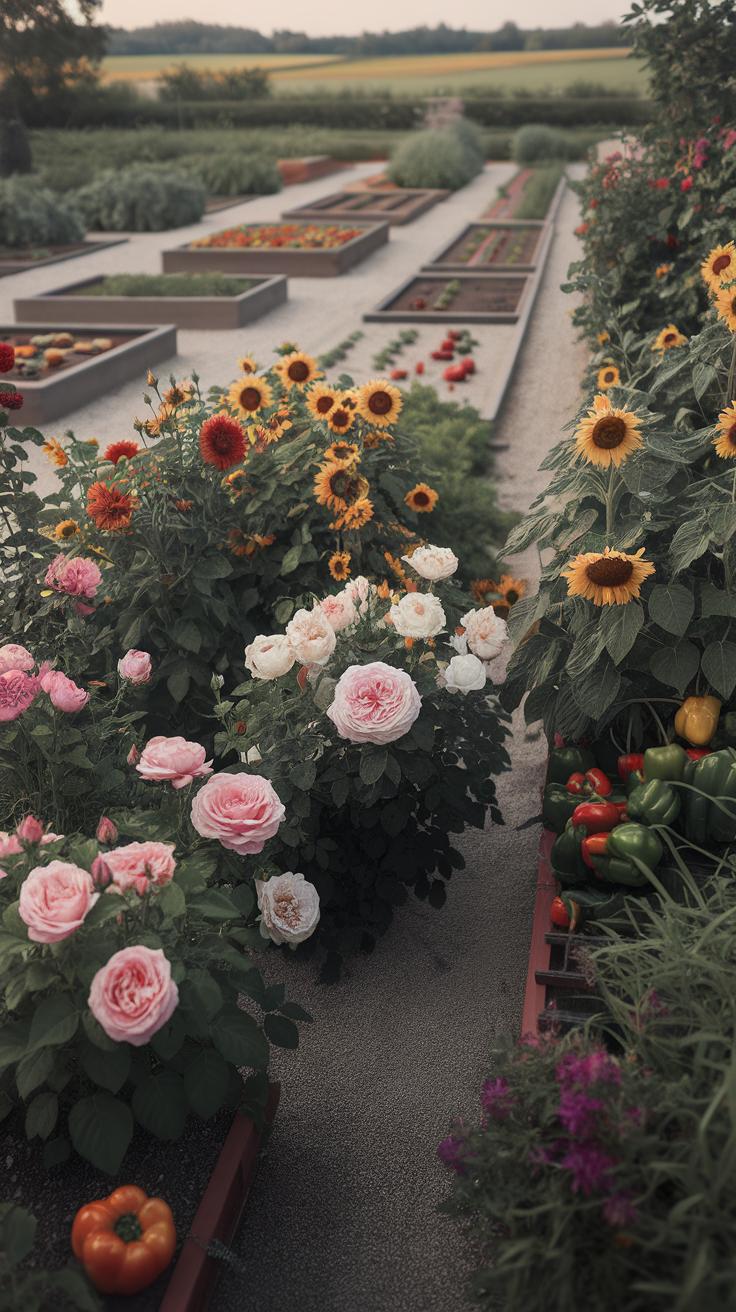
Understanding Biodiversity’s Role
Biodiversity is the lifeblood of any thriving farm garden, fostering resilience and ecological balance. Cultivating a variety of plant and animal species not only enhances the garden’s aesthetic appeal but also contributes to healthier ecosystems. A diverse selection of plants can prevent pest outbreaks, reduce diseases, and support beneficial organisms. By planting companion species, for instance, gardeners can naturally repel harmful insects while attracting pollinators, ensuring a productive environment.
Techniques for Cultivating Diversity
Incorporating crop rotation, intercropping, and permaculture principles allows for the establishment of a vibrant mix of species. Planting native flora attracts local fauna, creating a symbiotic relationship that benefits the entire ecosystem. Incorporating various growth forms, from ground covers to tall perennials, encourages complex habitats that support diverse wildlife. These practices not only promote sustainability but also enhance the rustic charm of the farm garden, making it a sanctuary for both nature and the gardener.
Sustainable Practices in Farm Gardens Promoting Environmental Health
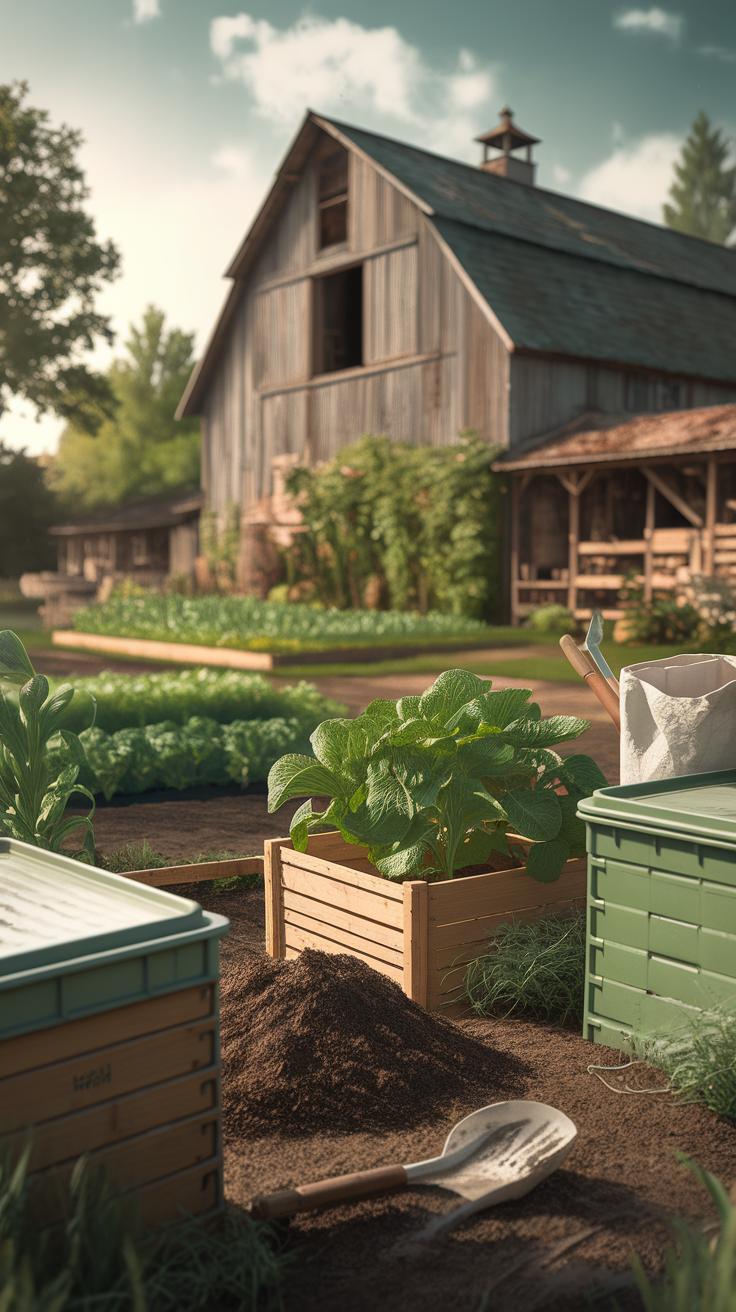
Implementing Eco-Friendly Methods
Sustainable gardening practices in farm gardens emphasize a harmonious relationship with nature while ensuring high levels of productivity. Implementing techniques such as permaculture and agroecology fosters a balanced ecosystem that not only supports plant growth but also enhances soil health. Crop rotation plays a vital role in maintaining soil nutrients and preventing disease buildup. By alternating crop families, gardeners can reduce reliance on chemical fertilizers and promote the natural rejuvenation of the land.
Integrating cover crops, such as clover or vetch, can enrich the soil, suppress weeds, and promote biodiversity, which aligns seamlessly with the previous discussion on the significance of biodiversity. Additionally, utilizing organic compost aids in soil enrichment, allowing farm gardens to flourish without harmful chemicals. These eco-friendly approaches ensure that gardens remain productive while nurturing the environment.
Water Conservation Techniques
Water conservation is a critical aspect of sustainable farm gardening. Implementing practices like drip irrigation and rainwater harvesting not only conserves water but also enhances the efficiency of watering plants. Mulching around plants assists in moisture retention and regulates soil temperature, mitigating the risk of drought stress. Such techniques ensure that farm gardens maintain their vitality even in challenging climatic conditions. Combining these water management strategies with diverse planting schedules, as will be discussed in the following chapter, creates a resilient gardening ecosystem that thrives year-round and contributes positively to environmental sustainability.
Seasonal Planting and Harvesting Understand the Seasonal Cycle
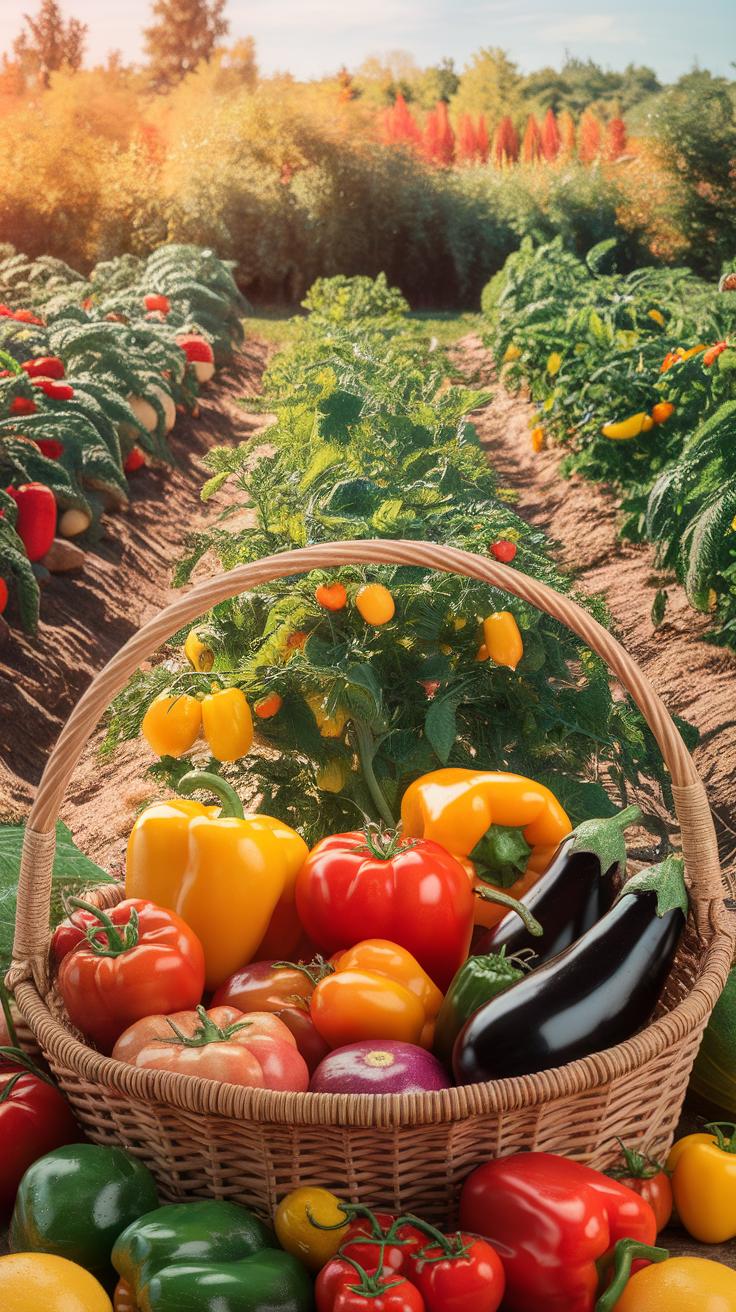
Planning for Year-Round Sustainability in Farm Gardens
Farm gardens thrive on a thorough understanding of the seasonal cycle, which dictates when to plant and when to harvest. Each season offers unique opportunities for specific crops that flourish in the variable weather. Spring heralds the time for sowing cool-season vegetables like peas and lettuce, which benefit from the moderate temperatures. As summer arrives, heat-loving plants such as tomatoes and peppers take center stage, demanding regular attention and nurturing.
Autumn signifies a transition period, perfect for planting root vegetables like carrots and beets that will mature as the colder months approach. Winter, while appearing dormant, provides an opportunity for planning; this period can be used to evaluate previous seasons and prepare for the next planting cycle, ensuring a sustainable approach that aligns with nature’s rhythm.
Enhancing Aesthetic Appeal Rustic Charm Through Farm Garden Design
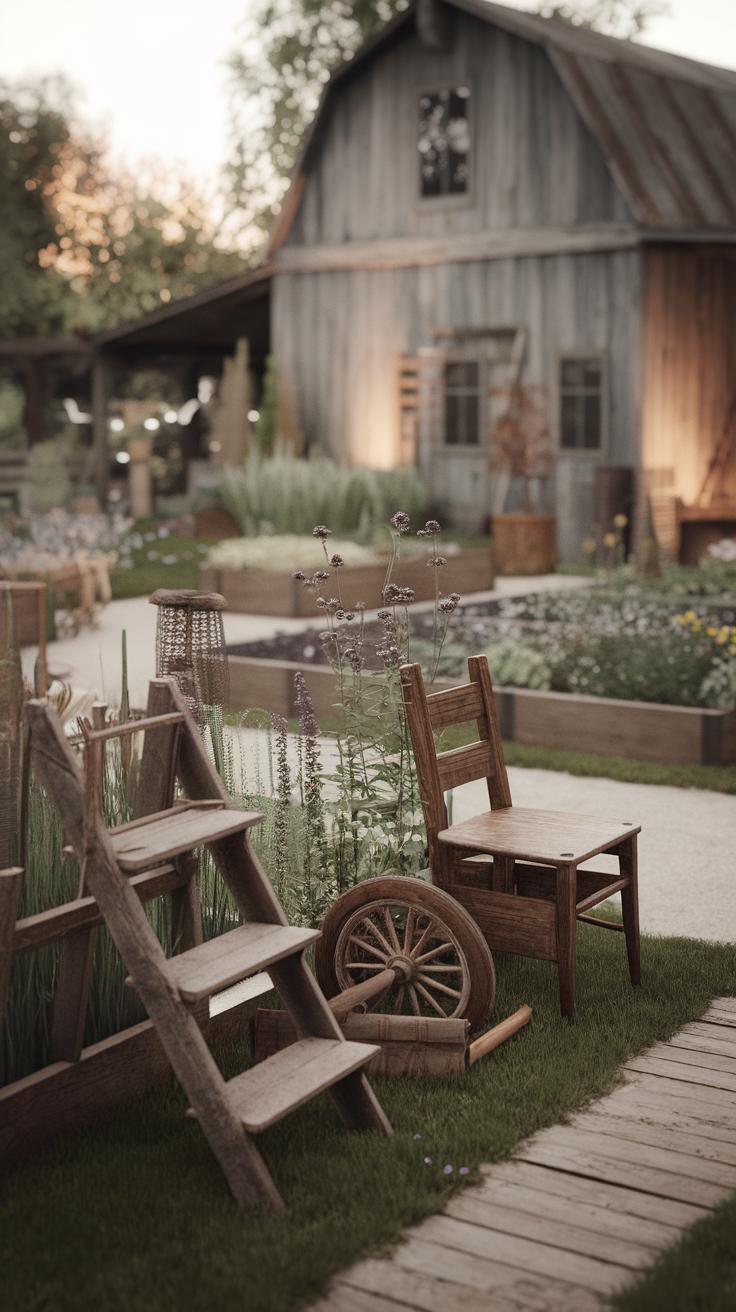
Creative Plant Arrangements for Rustic Beauty
Designing a farm garden that radiates rustic charm requires thoughtful consideration of plant arrangements and design elements. Emphasizing natural patterns can create a visual harmony that complements the surroundings. Grouping plants in clusters rather than uniform rows encourages organic shapes and gives a more relaxed look. Employing a mix of heights and textures not only enhances visual interest but also allows the eye to explore the garden more freely. Incorporating pathways made from natural materials like gravel or wood enhances the rustic feel while guiding visitors through the garden.
Design Elements to Elevate Visual Appeal
Incorporating decorative elements can elevate the aesthetic appeal of a farm garden. Utilize reclaimed materials, such as old wooden crates or vintage garden tools, as functional decor items to enhance the space. Trellises adorned with climbing vines or rustic fences made from weathered wood serve as both practical structures and visual focal points. To add color and texture, consider including ornamental grasses or wildflowers that evoke a sense of natural beauty. These elements transform a typical garden space into a picturesque retreat, inviting individuals to connect deeply with nature while enjoying its rustic charm.
Maintaining Your Farm Garden Ensuring Health and Beauty Through Seasonal Care
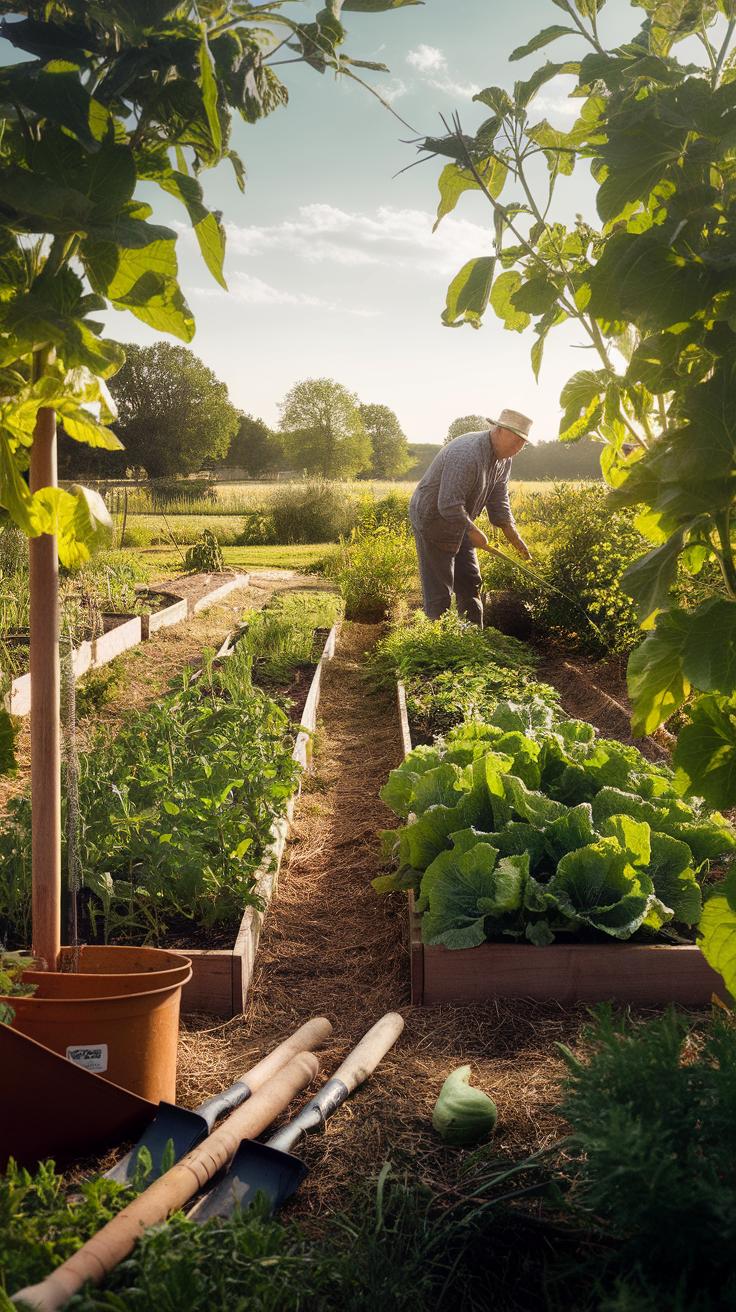
Seasonal Routine for Sustaining Rustic Charm
Establishing a successful farm garden demands ongoing attention to maintenance year-round. Emphasis should be placed on seasonal routines that address the specific needs of plants as they grow and adapt. Pruning perennials after blooming promotes air circulation and encourages new growth, while mulching in early spring retains moisture, suppresses weeds, and stabilizes soil temperature. Regular inspection for pests and diseases is vital, ensuring any issues are addressed swiftly to prevent spreading.
Building Resilience Through Care
The rustic charm of a farm garden flourishes with diligent care. Implementing crop rotation and companion planting not only boosts soil health but also promotes biodiversity. Rotating crops minimizes nutrient depletion and disrupts pest cycles, while companion plants serve to support one another, creating a balanced ecosystem. Engaging in these practices nurtures a vibrant environment, allowing beauty and productivity to coexist harmoniously as seasons transition.
Community and Farm Gardening Exploring Shared Spaces and CommunitySupported Agriculture
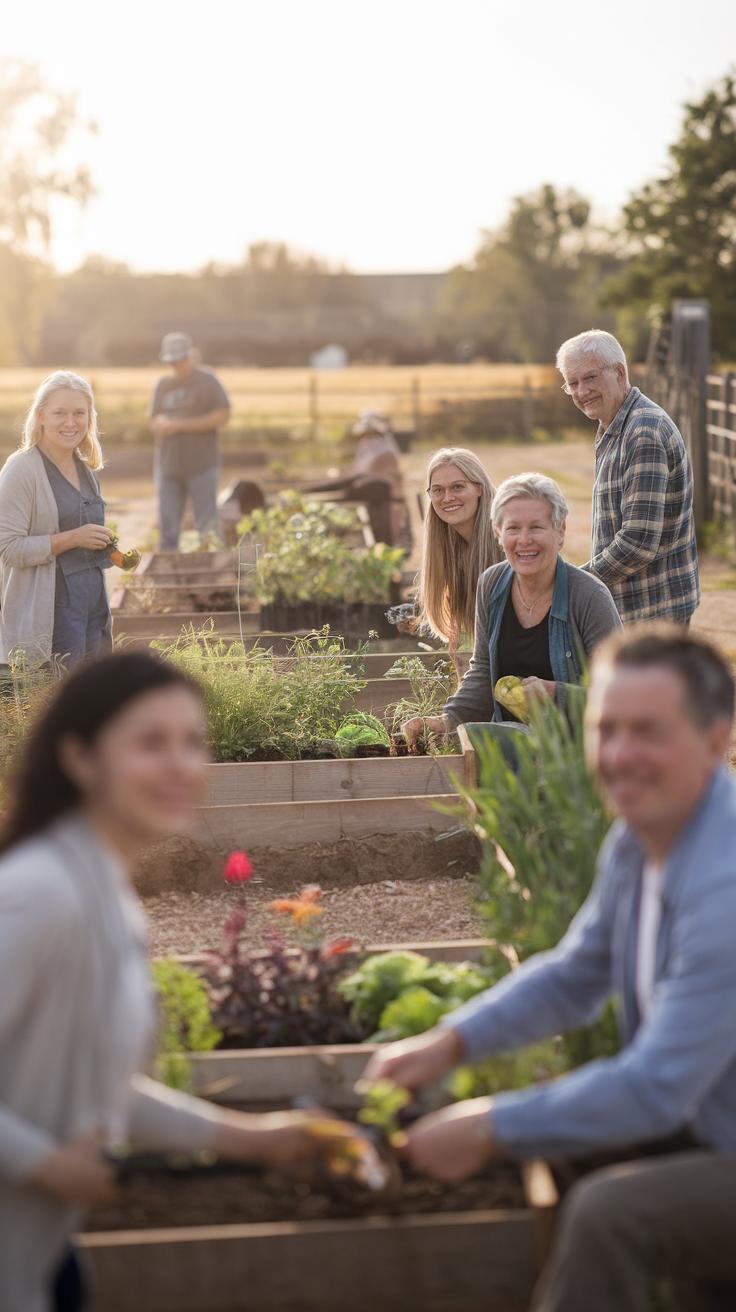
Building Connections through Shared Spaces
Farm gardens serve as vibrant hubs where communities come together, fostering connections and collaboration. Shared gardening spaces create an environment where individuals can participate in activities ranging from planting to harvesting, enabling people of all ages to learn and grow alongside one another. These communal efforts not only promote teamwork but also cultivate a sense of belonging and camaraderie. Neighbors gather to share their expertise, exchange seeds, and trade recipes, further enriching the gardening experience and fostering friendships that extend beyond the garden gates.
Community-Supported Agriculture (CSA): A Cooperative Approach
Engagement in community-supported agriculture (CSA) allows residents to support local farmers while securing fresh produce for their families. Members often pay upfront for seasonal shares, forging a strong bond between consumers and growers. This mutually beneficial arrangement ensures that farmers have the financial means to cultivate their land while providing community members with high-quality, organic produce. Such initiatives also encourage sustainable farming practices, as community members become more invested in the environmental impact of their food sources. By participating in CSAs, individuals not only benefit personally but also contribute to the holistic health of their local ecosystems.
Conclusions
Embracing the rustic charm of farm gardens allows individuals to create personal sanctuaries that resonate with both functionality and beauty. Throughout this article, we’ve examined fundamental principles such as soil management, plant selection, and the incorporation of visual elements that contribute to a well-designed garden space. By implementing these ideas, gardeners can not only enhance their landscapes but also celebrate the joy of nurturing life from the earth.
As we reflect on the journey through farm gardening, it’s clear that engaging with nature in this manner can lead to numerous benefits—both environmental and personal. Whether one is working with a small plot or expanding into larger fields, the principles of design and the appreciation for natural beauty can transform any space into a vibrant farm garden that offers solace and abundance.


